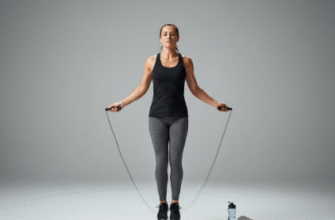Feeling swamped by all those home project ideas swirling around in your head? One minute you’re dreaming of a serene bathroom oasis, the next you’re mentally knocking down kitchen walls, and then suddenly that messy garage is screaming for attention. It’s easy to feel overwhelmed and unsure where to even begin. What if there was a fun, visual way to corral those ideas, get focused, and actually start turning those home dreams into reality? Enter the home project vision board.
You’ve probably heard of vision boards for life goals or career aspirations, but applying this powerful visualization tool specifically to your living space can be incredibly effective. It’s more than just cutting out pretty pictures; it’s about creating a tangible representation of your aspirations for your home, helping you clarify your style, prioritize projects, and stay motivated throughout the (sometimes lengthy) process of renovation or redecoration.
Why Dedicate a Vision Board Just to Home Projects?
Creating a separate vision board specifically for your home offers several unique advantages over a general life board or just a mental checklist:
- Clarity of Vision: Seeing images, colors, textures, and layouts all in one place helps solidify what you truly want. It forces you to move beyond vague ideas like “nicer kitchen” to specific elements like “white shaker cabinets,” “butcher block countertops,” and “subway tile backsplash.”
- Focus Amidst Chaos: Home projects can be messy and disruptive. Having a visual reminder of the beautiful end goal can keep you centered and motivated when you’re living amidst dust and drop cloths.
- Prioritization Power: When you see all your desired projects laid out, it becomes easier to decide what needs to happen first, what can wait, and how different projects might relate to each other. Maybe tackling the entryway makes sense before the living room, or perhaps painting multiple rooms the same color should be done simultaneously.
- Sustained Motivation: Let’s be honest, some home projects drag on. A vision board acts as a constant, inspiring nudge, reminding you why you started and what wonderful result awaits your efforts.
- Communication Tool: If you live with others, a vision board is a fantastic way to get everyone on the same page. It facilitates discussion and ensures everyone understands the shared goal, preventing misunderstandings down the line. It’s also helpful for communicating your vision to contractors or designers.
Gathering Your Creative Arsenal: Supplies
Before you start dreaming, let’s get practical. You don’t need fancy or expensive materials. The goal is function and inspiration, not perfection. Here’s a basic list:
- The Board Itself: This could be anything from a simple corkboard, a magnetic whiteboard, a large piece of foam core, or even just a designated section of a wall. Poster board works too! Digital options like Pinterest or Canva are also popular (more on that later).
- Adhesives/Fixings: Depending on your board, you’ll need thumbtacks, push pins, magnets, washi tape, double-sided tape, or a glue stick.
- Cutting Tools: Scissors are essential. A craft knife can be useful for more precise cuts.
- Source Materials: This is the fun part! Gather:
- Home décor magazines (Elle Decor, House Beautiful, Architectural Digest, Better Homes & Gardens, Real Simple, DIY mags)
- Old books with relevant imagery
- Paint color swatches from the hardware store
- Fabric scraps or wallpaper samples
- Printouts from websites (Pinterest, Instagram, Houzz, manufacturer sites, blogs)
- Your own photos of spaces you admire
- Catalogs from furniture or home goods stores
- Even botanical prints, postcards, or wrapping paper that evoke the right mood!
- Optional Extras: Markers, pens, labels for adding notes, quotes, or timelines.
Pinpointing Your Projects: Defining Home Goals
Okay, supplies gathered! Now, before you dive into the magazines, take some time to brainstorm. What areas of your home are you focusing on? What needs attention most urgently? What changes would bring you the most joy or improve functionality?
Think broadly at first, then narrow it down. Consider:
- By Room: Kitchen, bathroom, bedroom, living room, office, entryway, laundry room, garage, patio, garden?
- By Project Type: Painting, new furniture, flooring update, lighting fixtures, storage solutions, landscaping, specific repairs, décor refresh?
- By Timescale: Quick weekend updates, projects for the next six months, long-term renovation goals?
- By Feeling: Do you want a space that feels cozy, airy, vibrant, calming, sophisticated, rustic, modern?
Jot down your thoughts. Don’t censor yourself at this stage. Getting it all out helps you see the bigger picture and start prioritizing what truly matters for your vision board.
The Thrill of the Hunt: Finding Inspiration
This is where your inner curator shines. Start sifting through your gathered materials. Look for images, textures, colors, and even words that resonate with the goals you just defined. Don’t just look for pictures of finished rooms; look for details.
- A specific faucet style
- The texture of a knitted throw
- A pleasing color combination
- The way light falls in a particular photo
- A piece of furniture you adore
- A clever storage idea
- A garden layout
- An architectural detail
Tip: Cut out or save anything that catches your eye, even if you’re not sure exactly how it fits yet. It’s better to have too much material to choose from than too little. Think about the *feeling* an image evokes, not just the literal objects within it. Does it feel peaceful? Energizing? Comfortable? That feeling is just as important as the specific design element.
Did you know? Visualizing your goals is a scientifically recognized technique for improving performance and increasing the likelihood of achievement. Creating a vision board actively engages your brain in focusing on your desired outcomes. This constant visual reminder helps keep your goals top-of-mind and reinforces your commitment.
Curating Your Vision: Making the Cuts
You’ve gathered a mountain of potential inspiration. Now it’s time to refine. Spread everything out. Look back at your list of prioritized projects and desired feelings. Start grouping images and samples that seem to work together for a specific room or project.
Be selective. Does that image *really* capture the essence of your dream kitchen, or was it just a fleeting attraction? Does this paint swatch clash horribly with the fabric sample you love? This curation phase is crucial. It’s where your vague ideas start to coalesce into a more concrete aesthetic. Remove anything that feels “off,” doesn’t align with your priorities, or simply doesn’t excite you anymore.
Trust your intuition. Your home should reflect *you*, not just replicate a magazine spread. Choose the elements that genuinely make you feel happy, comfortable, and inspired.
Composing Your Masterpiece: Arranging the Board
There’s no single “right” way to arrange your vision board. The best layout is the one that makes sense and feels inspiring to you. Here are a few approaches:
- By Room/Area: Create distinct sections on your board for the kitchen, bedroom, garden, etc. This works well if you have multiple projects running concurrently.
- By Project: Group all elements related to a specific task, like “Living Room Paint Refresh” or “Bathroom Storage Overhaul.”
- Flowing Collage: Create a more organic, overlapping arrangement of images and materials that represents the overall mood and style you’re aiming for throughout your home.
Consider these tips as you arrange:
- Leave Some Space: Don’t overcrowd the board. White space helps individual elements stand out and prevents visual clutter.
- Add Text: Use markers or labels to add notes. Write down paint color names, fabric sources, inspirational words (“Calm,” “Bright,” “Organized”), or maybe even target completion dates (keep them flexible!).
- Layering: Overlapping images and textures can create visual interest. Place fabric swatches or paint chips partially over inspiring room photos.
- Focal Point: Is there one “hero” image that perfectly encapsulates your main goal? Consider giving it a prominent position.
Keep rearranging until it feels right. This is *your* tool, so make it visually appealing and motivating *for you*.
Making it Work: Placement and Active Use
Where you put your board matters. It needs to be somewhere you’ll see it regularly. Consider:
- Your home office
- The kitchen command center
- Near the actual area you’re working on (if practical)
- Inside a closet door for a more private reminder
A vision board isn’t a static piece of art; it’s a dynamic planning tool. Engage with it actively:
- Look at it daily: Spend a few moments each day absorbing the images and reminding yourself of your goals.
- Update it: As you make decisions, find new inspiration, or complete tasks, update your board! Swap out tentative choices for final selections. Add photos of completed stages. Remove elements related to finished projects (so satisfying!).
- Use it for decisions: When choosing paint or shopping for furniture, refer back to your board to ensure your choices align with your overall vision.
Digital vs. Physical: Choosing Your Medium
Can’t decide between a tangible board and a digital one? Why not both?
Physical Boards:
- Pros: Tactile and engaging; always visible in its designated spot; the physical act of cutting and pasting can be very satisfying and grounding.
- Cons: Takes up physical space; less easily edited or shared; requires physical materials.
Digital Boards (Pinterest, Canva, Trello, etc.):
- Pros: Easily accessible from anywhere; simple to edit, add, and rearrange; easy to share with partners or contractors; infinite space; free options available.
- Cons: Less tangible; can get lost in endless scrolling; requires a screen to view; might feel less “present” than a physical board.
Many people find a hybrid approach works best. Use Pinterest or other apps for initial brainstorming and gathering vast amounts of inspiration, then curate the absolute essentials onto a physical board for that daily, tangible reminder.
Start Dreaming, Start Pinning!
Creating a vision board for your home projects is more than just a crafty afternoon activity; it’s a powerful step towards making your dream home a reality. It transforms abstract ideas into a visual roadmap, providing clarity, focus, and sustained motivation. It helps you define your style, prioritize your tasks, and keep the end goal in sight, even when faced with the inevitable challenges of home improvement. So grab those magazines, fire up Pinterest, collect those paint chips, and start building a visual representation of the home you aspire to create. Your future self, enjoying that beautifully finished space, will thank you.








